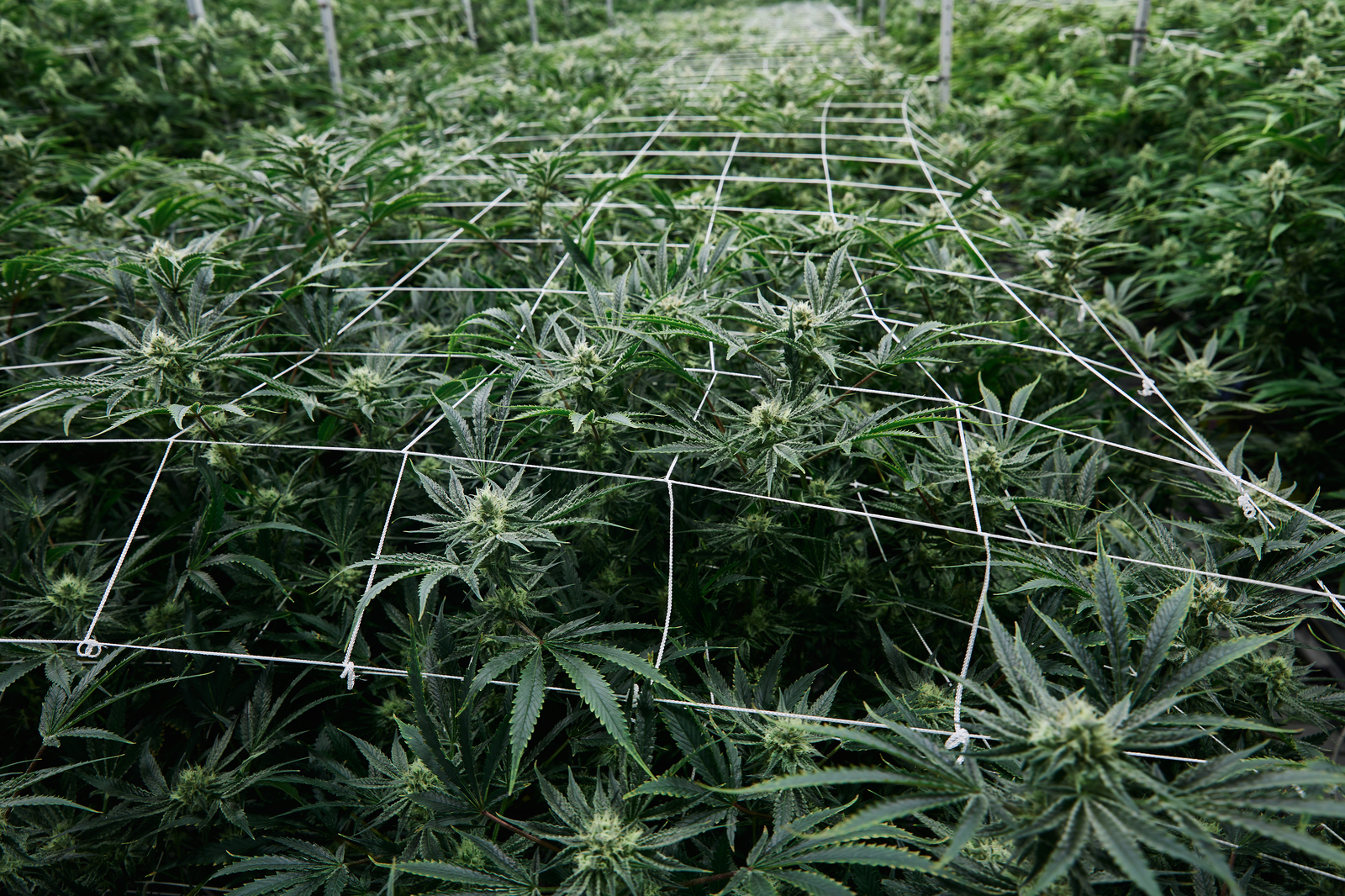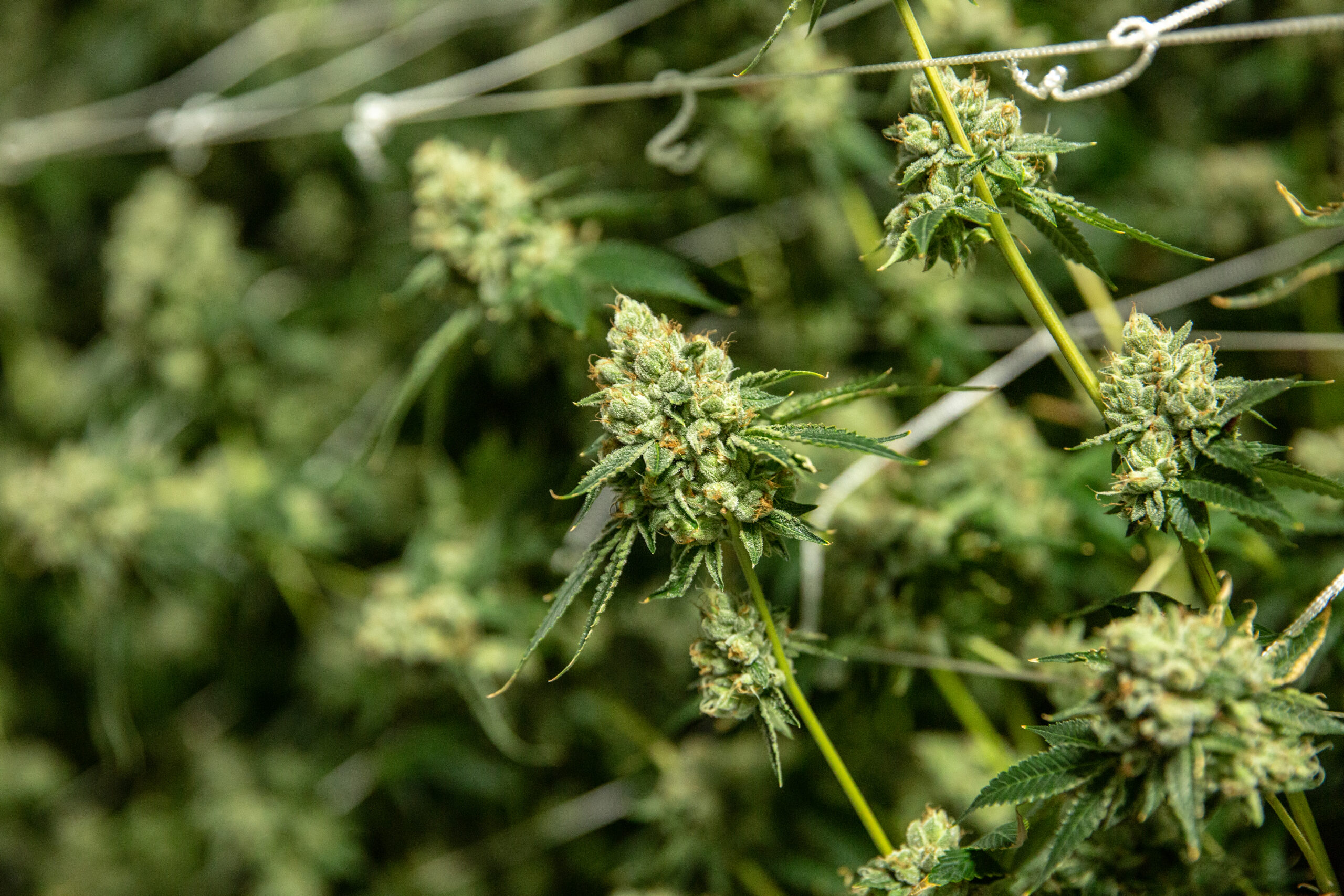It doesn't matter if you're growing a few cannabis plants in your home garden or starting a commercial operation, the goal of most marijuana cultivators is to yield as much bud as possible every harvest. To achieve that shared goal, growers select the best genetics they can find, carefully research nutrients and watering techniques, and meticulously trim and top their plants. Another incredibly cheap method to increase yields and grow healthier plants? Trellising.
What is trellising and how can a few posts or plastic nets help your cannabis plants reach their ideal growth? In this article, we'll cover those questions, plus dive into the difference between trellising outdoor and indoor plants, and give you a step-by-step breakdown on how to best support your plants.
What is trellising?
In broad terms, trellising refers to using a structure to support and organize a plant's growth. Trellising can consist of wooden, plastic, or metal frames built around a plant to support it or square netting draped over a plant at certain stages of growth.
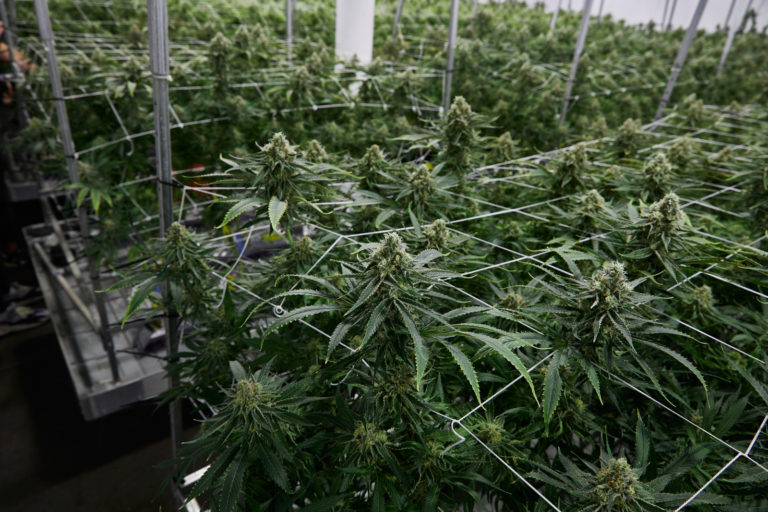 Photo by: Gina Coleman/Weedmaps
Photo by: Gina Coleman/WeedmapsImage lightbox

The use of support structures in agriculture goes back at least to the Roman empire when trellising was used to grow plants vertically. It eventually gave way to an art form and architecture style built around the tall latticed structures. In cannabis farming, trellising is usually separated into two categories: vertical and horizontal.
Vertical trellising involves tall mesh frames that surround the plant. The frames are typically built around stakes made of wood, bamboo, or PVC. Horizontal trellising, on the other hand, is trellis netting draped on top of plants. Vertical trellising is usually installed at the beginning of a growing cycle, while horizontal trellising can be installed during various times of a plant's life. The last layer of netting is typically placed over plants at the very beginning of flowering.
Why is trellising important?
Cannabis plants are widely known for their vigorous and wild growth — hence the name “weed.” But if you're cultivating specifically to yield as many resinous flowers as possible, it is important to organize and direct your plants to maximize their output. Trellising is important because it creates a roadmap for your garden, letting each plant know where to grow.
Trellising provides spacing and direction that allows plants to grow with enough space and airflow to promote fuller flower growth and protect against bud rot and mold. Cannabis plants left to their own devices grow straight towards the sun, with branches often clumping together in pursuit of that nutritional light. Without any structure, interior branches will not get enough light to thrive and flowers in the canopy will grow smaller due to overcrowding. Using the equally spaced gaps in trellis netting, flowers are able to get the space they need to absorb light and nutrients and grow to their full potential.
In addition to opening up your plants to more uniform lighting and giving them space to grow, trellising provides physical support for branches and buds that might otherwise topple over or break off due to their own weight.
Is trellising only for outdoor cannabis plants?
Trellising is often associated with large, tree-sized outdoor plants with wild branches pointing in every direction, but indoor operations and greenhouse cultivation sites get major benefits from trellising as well.
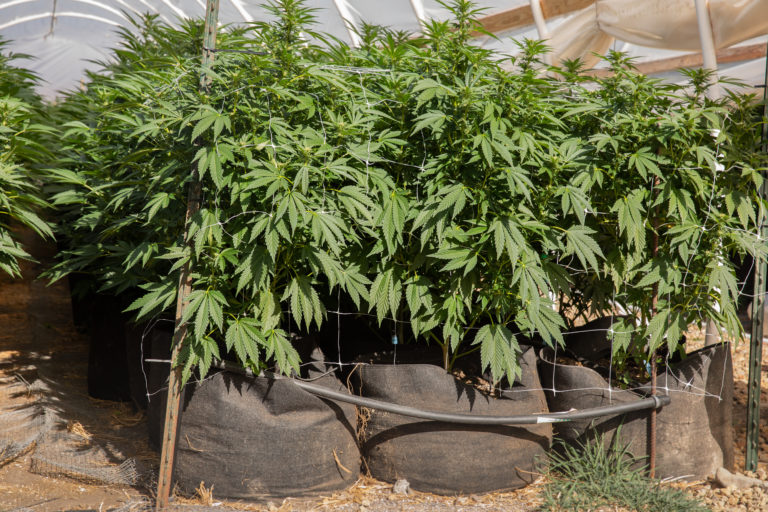 Photo by: Gina Coleman/Weedmaps
Photo by: Gina Coleman/WeedmapsImage lightbox

The main difference between outdoor and indoor trellising comes down to size and style. Outdoor growers often use rigid metal, PVC, or wood posts combined with wire to build a vertical frame that can support a massive plant and stand up to the rigors of the outdoor environment. Indoor growers, on the other hand, typically prefer a ScrOG or Screen Of Green method of horizontal trellising. They carefully top the plants then place a plastic trellising net over them during the vegetation stage of growth.
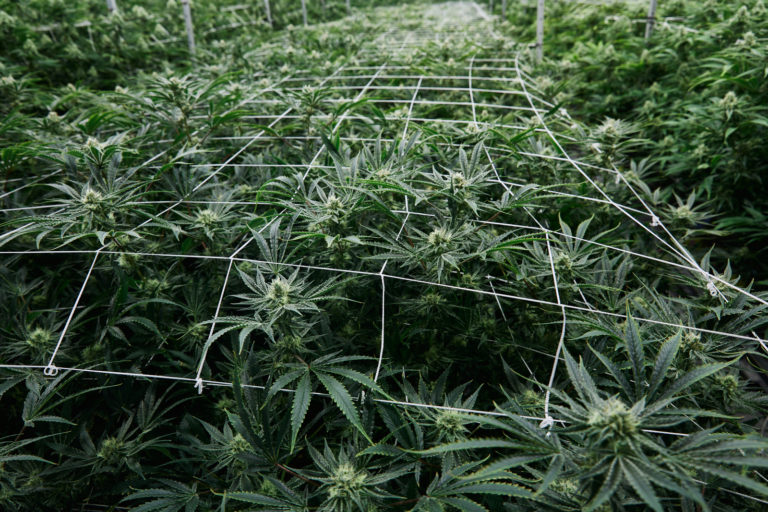 Photo by: Gina Coleman/Weedmaps
Photo by: Gina Coleman/WeedmapsImage lightbox

Indoor trellising allows plants to best harness the power of the room's grow lights, which typically sit above the beds and do not have the same daily movement as the natural sun. By grooming plants to focus energy and nutrients on the canopy and then giving that top layer of branches ample space and light exposure with the help of trellising, your grow room will flower with a sea of massive colas spearing above the netting.
How to trellis your cannabis crop
Every cannabis cultivation site is different so these steps might not apply to your garden specifically. But in an effort to cover as many bases as possible, we'll go over both vertical and horizontal trellising processes.
Vertical trellising
- Place wood, PVC, or bamboo stakes deep into the four corners of your planter bed or pot.
- Stretch netted trellising around the stakes, using zip ties or flexible planters tape to secure the screen to the frame.
- As the plants grow, carefully push branches through the holes in the netting to provide stability and structure.
Horizontal trellising
- Place wood, PVC, or bamboo stakes in the four corners of your planter bed or grow space. These will anchor your net.
- When your plants have fully entered the vegetative phase before flowering, drape a trellis net with large holes over the entire canopy of your plants.
- Carefully tuck the tops of the growing plants under the net, until the entire canopy sits at the same height. This is your ScrOG or Screen Of Green.
- As the plants continue to grow, the even height will feed more of the energy from your lights to the canopy, allowing as many flowers as possible to grow out of the holes in your netting.
- When your plants begin to flower, use another large, draping net to cover the top of your plants to support any heavy flowers that might otherwise fall under their own weight.
Once your plants are ready for harvest, cut through the trellising to remove large branches, being careful not to mangle any lower branches on the plastic netting as you remove buds for drying.
Trellising may seem like an unnecessary step in the cannabis growth cycle, but the added structure and direction of the frame and netting will help take any plant's growth, and yield, to the next level.

